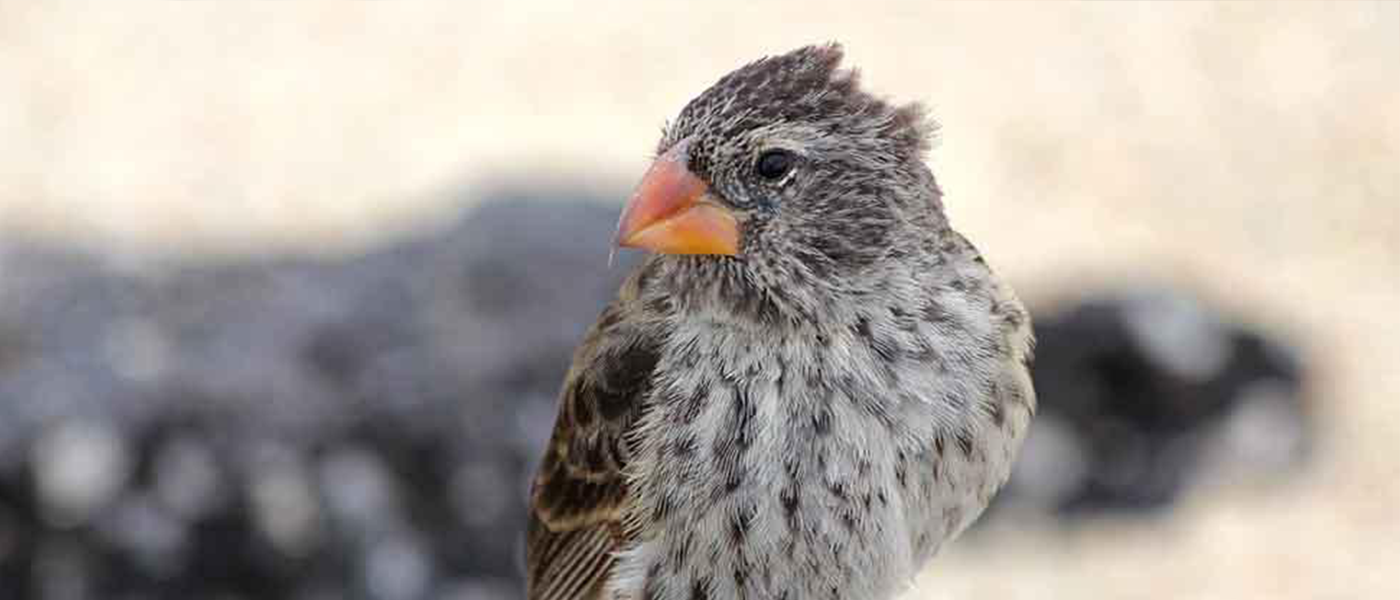Our research in the area of Ecology and Evolution aims to address several important questions and uses a host of approaches and techniques to achieve this. Most labs use multidisciplinary approaches spanning several areas such as molecular techniques, quantitative methods, GIS, laboratory experimentation on organism development and physiology, population dynamics, genetic analyses as well as satellite imagery.
Expandable List
- BIOL 6DD3 / Molecular Evolution
- BIOL 708 / Quantitative Methods in Ecology and Evolution
- BIOL 709 / Ecological Statistics
- BIOL 715 / Topics in Evolutionary Genetics
- BIOL 720 / Bioinformatics
- BIOL 721 / Topics in Molecular Evolution
- BIOL 724 / Molecular Ecology
Explore the Graduate Courses page for more information
- Recently, the Evans lab has uncovered variation in genetic mechanisms for sex determination in frogs, and explored how different social systems affect genome evolution in primates.
- The Dudley lab has discovered that plants recognize their kin and respond to them modifying their growth patterns (as featured on CBC)
- The Rollo lab has identified a complex mixture of nutrients that appears capable of dramatically extending mammalian life spans
- Research in the Scott lab has uncovered connections between temperature and adaptability, which have unexpected implications for climate change effects (PNAS, 2012)
- The Quinn lab has made remarkable discoveries, connecting air pollution with heritable genetic change (as published in Science)
- Using mathematical modelling, the Bolker and Dushoff groups are revealing important insights into the spread of infectious disease
Ecology & Evolution
Ben Bolker
Professor
I am a quantitative ecologist and evolutionary biologist. I am interested in the ecology and evolution of host-pathogen interactions, including the evolution of virulence; spatial population dynamics, including plant competition and animal movement; and general statistical methods for ecology and evolution. I have worked with data from historical records and from empirical collaborators from a large variety of biological systems – for example seed dispersal by bluebirds, movement of black bears and panthers in Florida, and evolution of virulence in HIV. I focus on developing theoretical models that can be empirically tested, as well as statistical models that can be interpreted in mechanistic terms.
Patricia Chow-Fraser
Professor, Faculty of Science Research Chair
I conduct research on the ecology, conservation and management of aquatic and terrestrial ecosystems in the Great Lakes basin. A primary goal is to develop simple ecological indicators to track impacts of human activities on the long-term health of target ecosystems; these have involved citizen scientists, especially high school students and indigenous youth. Our projects involve extensive sampling in streams, lakes, vernal pools, boreal forests, and coastal marshes throughout Ontario, collecting information on planktonic and benthic algae, zooplankton, macro-invertebrates, aquatic macrophytes, wetland fish and birds, amphibians, and/or turtles. We also use satellite information to assess land-use alterations and shoreline development on wetland connectivity and quality, and to map habitat loss from colonization of invasive Phragmites australis. Working continuously in Georgian Bay (GB) since 2003, we have created one of the largest and most comprehensive databases on coastal wetlands of eastern and northern GB. We have modelled the effect of water level on marsh zonation in GB, and how human activities (particularly associated with agricultural and urban/recreational development) can affect nutrient status in embayments, wetlands and streams. My students also use remote sensing, geographic information systems, and radio-telemetry to determine how at-risk freshwater turtles use their habitats, information that is used to find the best options to protect and conserve connecting corridors and critical habitat. Recently, we have begun to examine how recovery of boreal forests from wildfire outbreaks are affected by proximity to water bodies and human features and activities.

Patricia Chow-Fraser
Professor, Faculty of Science Research Chair
Emily Choy
Assistant Professor
My research program focuses on the effects of anthropogenic stressors on avian wildlife and other predators to monitor broad-scale environmental change. My lab conducts field research in temperate and Arctic ecosystems to examine the impacts of climate change on avian fitness via (1) the indirect effects of environmental variation on (1) prey type, quality, and quantity; and (2) energetics and behaviour; (3) the direct effects of warming temperatures on physiological traits associated with heat stress; and (4) the cumulative effects of multiple stressors including contaminants.
Susan Dudley
Professor
Plant interactions with other plants My current research focuses on plant communication and behaviour, including plant kin recognition. Plants live in highly social environments, and they do behave, though very slowly. Plants sense the presence of other plants, and then respond, usually by producing a more competitive phenotype. Responses to cues of neighbours are thus important in competition. My lab has worked on plant responses to aboveground cues, the presence/absence of belowground neighbours, and the relatedness of belowground neighbours. We collaborate with Dr. Harsh Bais, University of Delaware, on research into the underlying mechanisms for responses to relatives. Adaptation to abiotic stresses My research program on the evolution of plant carbon acquisition traits has included studies that integrate the physiological ecology of drought stress with the natural selection on drought stress traits, and genetic differentiation between populations from environments differing in water availability. A former student, Laura Beaton developed a research program on adaptation of plants to roadside stresses, including salinity and manganese. I collaborate with Dr. Lisa Donovan, University of Georgia, in understanding how plant physiological traits evolve under stress.
Jonathan Dushoff
Professor, Faculty of Science Research Chair
I am a theoretical biologist with a wide variety of interests, but my primary focus is the evolution and spread of infectious diseases, with a particular interest in human health. Diseases that the lab works on include HIV, syphilis, canine rabies, and Ebola. We use theoretical, statistical and computational approaches to understanding disease data, with a particular focus on methods that combine dynamical mechanism with statistical inference.

Jonathan Dushoff
Professor, Faculty of Science Research Chair
Ian Dworkin
Professor
At one level, evolution is remarkably simple, with just a few concepts (mutation, recombination, random drift and natural selection) that underlie the overall process. Yet this description obscures many issues that make evolution a fascinating area for study. Evolution typically involves many genes and often revolves around interactions between individuals and their environments. Moreover, genes interact with one another and with the environment in a nonlinear fashion, resulting in complex phenotypes and evolutionary dynamics. My work aims to describe and analyze such interactions with experimental and quantitative rigor. Specifically work in my lab aims to address the fundamental question about the mechanistic basis of observed phenotypic variation. That is, how genetic (and environmental) variation modulate developmental processes and ultimately influence phenotypic outcomes. My research employs genetic and genomic approaches to address these issues, largely using Drosophila (fruit flies) as a model system. Most labs that work with Drosophila study either individual mutations of large effect (such as those that completely knock out a particular function) or subtle quantitative variation (rarely identifying specific genes). We employ both of these empirical approaches in conjunction with our genomic analyses to help relate our understanding from developmental genetics with the natural variation observed in populations.
Ben Evans
Professor, Associate Chair (Graduate Studies)
Evolutionary Genetics, Genomics, and Sex Chromosomes The Evans lab studies how natural selection, recombination, and demography influence genome evolution. One of the major themes of our work is to study speciation and gene duplication in African clawed frogs. This work aims to further understanding of the extent and mechanisms of biological diversification in this group, and to explore interesting genomic phenomena such as the evolution of sex chromosomes and transposable elements. Another focus of our efforts relates to the role of social systems on genome evolution. This work involves simulations of genome evolution under various social systems, and analysis of molecular polymorphisms from sex chromosomes, autosomal DNA, and mitochondrial DNA of cercopithecine monkeys.
Brian Golding
Professor
My group at McMaster University is interested in the area of molecular evolution, bioinformatics, and sequence analysis. Our research attempts to understand how the processes of evolution act to cause the changes observed between molecules, between genes and between genomes. The recent advances in molecular genetics are providing a storm of new data on DNA sequences, on gene structure and higher order genomic structure. However, the implications of these new data are not always clear. This area of scientific inquiry is inter-disciplinary between biology, computer science and mathematics. We make use of computer based analysis, statistical analysis and mathematical models to answer broad questions about the molecular biology of all organisms.
Karen Kidd
Professor, Jarislowsky Chair
My research program focuses on understanding the impacts of human activities on aquatic ecosystems. More specifically, my students and I study the effects of point (municipal, industrial) and non-point (agriculture, forest harvesting) discharges on the health of aquatic organisms, and the fate of persistent pollutants in freshwater and marine ecosystems. Much of our research is multidisciplinary in nature and an interface between biogeochemistry, chemistry, ecology and toxicology. For example, we use measurements of stable nitrogen, sulfur, hydrogen and carbon isotope ratios in organisms to characterize trophic relationships in diverse aquatic systems and to understand pollutant accumulation from primary producers through to top predators. I have led or been involved in three major whole ecosystem experiments to understand how 1) the estrogen used in the birth control pill affects fish and their prey, 2) wastes from rainbow trout aquaculture affect native organisms, and 3) a commonly-used herbicide and fertilizers affect the health of wetland communities.
Jurek Kolasa
Professor
I am an ecologist working at the level of species communities and ecosystems. I am primarily interested in the complexity of ecological systems that arises from the richness of species making them up. My group investigates links between the number of species and the stability of community properties, the links crucial to understanding of the functional value of biodiversity as well as indirect and latent threats to it. Specifically, we combine insights from different systems: we use natural model systems such as arrays of miniature aquatic ecosystems as well as we design and test artificial systems. The artificial systems have an extra benefit of being potentially useful in greening of urban living (from supplementing food to enhancing education). Our work blends theoretical and experimental approaches.
James Quinn
Professor Emeritus
Genetic relatedness, parentage and behavioural ecology of colonial and cooperative-breeding birds. My research combines the study of animal behaviour and population biology with the examination of molecular genetic markers. The main areas of research are: the evolution of complex social systems in birds; parental care patterns and mate choice; and genetic effects of environmental mutagen loads as estimated by DNA fingerprint mutation rates. To understand the evolution of communal social system we focus on two communal bird species. In Pukeko, a gallinaceous bird inhabiting New Zealand, groups of one to three males and similar numbers of females raise young at a single nest. Sexual access to laying females is shared among sexually mature males. In contrast, smooth-billed anis, a crotophagid bird of Central and South America, engage in a system of social pairs sharing a single nest and competing for access to the incubated clutch of eggs. Females bury each other’s eggs in the structure of the nest. We have detected mutant fragments of DNA in multi-locus mini-satellite profiles of herring gull families. High levels of polycyclic aromatic compounds (PAC) are associated with steel production facilities and automobile emissions. Rates of genetic mutations are being determined for gull colonies with varying levels of PACs.
Graham Scott
Professor, Canada Research Chair (Tier 2), University Scholar, Acting Associate Chair (Graduate Studies)
My lab strives to understand the integrative mechanisms (from molecule to organism) for how vertebrate animals tolerate and perform in challenging physical environments. We are interested in the physiological, cellular, and genomic bases of adaptation and acclimatization, particularly in response to hypoxia and/or temperature change. Physiological systems important for respiration and exercise are emphasized.

Graham Scott
Professor, Canada Research Chair (Tier 2), University Scholar, Acting Associate Chair (Graduate Studies)
Ben Bolker
Professor
I am a quantitative ecologist and evolutionary biologist. I am interested in the ecology and evolution of host-pathogen interactions, including the evolution of virulence; spatial population dynamics, including plant competition and animal movement; and general statistical methods for ecology and evolution. I have worked with data from historical records and from empirical collaborators from a large variety of biological systems – for example seed dispersal by bluebirds, movement of black bears and panthers in Florida, and evolution of virulence in HIV. I focus on developing theoretical models that can be empirically tested, as well as statistical models that can be interpreted in mechanistic terms.
Ben Bolker
Professor
I am a quantitative ecologist and evolutionary biologist. I am interested in the ecology and evolution of host-pathogen interactions, including the evolution of virulence; spatial population dynamics, including plant competition and animal movement; and general statistical methods for ecology and evolution. I have worked with data from historical records and from empirical collaborators from a large variety of biological systems – for example seed dispersal by bluebirds, movement of black bears and panthers in Florida, and evolution of virulence in HIV. I focus on developing theoretical models that can be empirically tested, as well as statistical models that can be interpreted in mechanistic terms.
Patricia Chow-Fraser
Professor, Faculty of Science Research Chair
I conduct research on the ecology, conservation and management of aquatic and terrestrial ecosystems in the Great Lakes basin. A primary goal is to develop simple ecological indicators to track impacts of human activities on the long-term health of target ecosystems; these have involved citizen scientists, especially high school students and indigenous youth. Our projects involve extensive sampling in streams, lakes, vernal pools, boreal forests, and coastal marshes throughout Ontario, collecting information on planktonic and benthic algae, zooplankton, macro-invertebrates, aquatic macrophytes, wetland fish and birds, amphibians, and/or turtles. We also use satellite information to assess land-use alterations and shoreline development on wetland connectivity and quality, and to map habitat loss from colonization of invasive Phragmites australis. Working continuously in Georgian Bay (GB) since 2003, we have created one of the largest and most comprehensive databases on coastal wetlands of eastern and northern GB. We have modelled the effect of water level on marsh zonation in GB, and how human activities (particularly associated with agricultural and urban/recreational development) can affect nutrient status in embayments, wetlands and streams. My students also use remote sensing, geographic information systems, and radio-telemetry to determine how at-risk freshwater turtles use their habitats, information that is used to find the best options to protect and conserve connecting corridors and critical habitat. Recently, we have begun to examine how recovery of boreal forests from wildfire outbreaks are affected by proximity to water bodies and human features and activities.
Patricia Chow-Fraser
Professor, Faculty of Science Research Chair
I conduct research on the ecology, conservation and management of aquatic and terrestrial ecosystems in the Great Lakes basin. A primary goal is to develop simple ecological indicators to track impacts of human activities on the long-term health of target ecosystems; these have involved citizen scientists, especially high school students and indigenous youth. Our projects involve extensive sampling in streams, lakes, vernal pools, boreal forests, and coastal marshes throughout Ontario, collecting information on planktonic and benthic algae, zooplankton, macro-invertebrates, aquatic macrophytes, wetland fish and birds, amphibians, and/or turtles. We also use satellite information to assess land-use alterations and shoreline development on wetland connectivity and quality, and to map habitat loss from colonization of invasive Phragmites australis. Working continuously in Georgian Bay (GB) since 2003, we have created one of the largest and most comprehensive databases on coastal wetlands of eastern and northern GB. We have modelled the effect of water level on marsh zonation in GB, and how human activities (particularly associated with agricultural and urban/recreational development) can affect nutrient status in embayments, wetlands and streams. My students also use remote sensing, geographic information systems, and radio-telemetry to determine how at-risk freshwater turtles use their habitats, information that is used to find the best options to protect and conserve connecting corridors and critical habitat. Recently, we have begun to examine how recovery of boreal forests from wildfire outbreaks are affected by proximity to water bodies and human features and activities.
Emily Choy
Assistant Professor
My research program focuses on the effects of anthropogenic stressors on avian wildlife and other predators to monitor broad-scale environmental change. My lab conducts field research in temperate and Arctic ecosystems to examine the impacts of climate change on avian fitness via (1) the indirect effects of environmental variation on (1) prey type, quality, and quantity; and (2) energetics and behaviour; (3) the direct effects of warming temperatures on physiological traits associated with heat stress; and (4) the cumulative effects of multiple stressors including contaminants.
Emily Choy
Assistant Professor
My research program focuses on the effects of anthropogenic stressors on avian wildlife and other predators to monitor broad-scale environmental change. My lab conducts field research in temperate and Arctic ecosystems to examine the impacts of climate change on avian fitness via (1) the indirect effects of environmental variation on (1) prey type, quality, and quantity; and (2) energetics and behaviour; (3) the direct effects of warming temperatures on physiological traits associated with heat stress; and (4) the cumulative effects of multiple stressors including contaminants.
Susan Dudley
Professor
Plant interactions with other plants My current research focuses on plant communication and behaviour, including plant kin recognition. Plants live in highly social environments, and they do behave, though very slowly. Plants sense the presence of other plants, and then respond, usually by producing a more competitive phenotype. Responses to cues of neighbours are thus important in competition. My lab has worked on plant responses to aboveground cues, the presence/absence of belowground neighbours, and the relatedness of belowground neighbours. We collaborate with Dr. Harsh Bais, University of Delaware, on research into the underlying mechanisms for responses to relatives. Adaptation to abiotic stresses My research program on the evolution of plant carbon acquisition traits has included studies that integrate the physiological ecology of drought stress with the natural selection on drought stress traits, and genetic differentiation between populations from environments differing in water availability. A former student, Laura Beaton developed a research program on adaptation of plants to roadside stresses, including salinity and manganese. I collaborate with Dr. Lisa Donovan, University of Georgia, in understanding how plant physiological traits evolve under stress.
Susan Dudley
Professor
Plant interactions with other plants My current research focuses on plant communication and behaviour, including plant kin recognition. Plants live in highly social environments, and they do behave, though very slowly. Plants sense the presence of other plants, and then respond, usually by producing a more competitive phenotype. Responses to cues of neighbours are thus important in competition. My lab has worked on plant responses to aboveground cues, the presence/absence of belowground neighbours, and the relatedness of belowground neighbours. We collaborate with Dr. Harsh Bais, University of Delaware, on research into the underlying mechanisms for responses to relatives. Adaptation to abiotic stresses My research program on the evolution of plant carbon acquisition traits has included studies that integrate the physiological ecology of drought stress with the natural selection on drought stress traits, and genetic differentiation between populations from environments differing in water availability. A former student, Laura Beaton developed a research program on adaptation of plants to roadside stresses, including salinity and manganese. I collaborate with Dr. Lisa Donovan, University of Georgia, in understanding how plant physiological traits evolve under stress.
Jonathan Dushoff
Professor, Faculty of Science Research Chair
I am a theoretical biologist with a wide variety of interests, but my primary focus is the evolution and spread of infectious diseases, with a particular interest in human health. Diseases that the lab works on include HIV, syphilis, canine rabies, and Ebola. We use theoretical, statistical and computational approaches to understanding disease data, with a particular focus on methods that combine dynamical mechanism with statistical inference.
Jonathan Dushoff
Professor, Faculty of Science Research Chair
I am a theoretical biologist with a wide variety of interests, but my primary focus is the evolution and spread of infectious diseases, with a particular interest in human health. Diseases that the lab works on include HIV, syphilis, canine rabies, and Ebola. We use theoretical, statistical and computational approaches to understanding disease data, with a particular focus on methods that combine dynamical mechanism with statistical inference.
Ian Dworkin
Professor
At one level, evolution is remarkably simple, with just a few concepts (mutation, recombination, random drift and natural selection) that underlie the overall process. Yet this description obscures many issues that make evolution a fascinating area for study. Evolution typically involves many genes and often revolves around interactions between individuals and their environments. Moreover, genes interact with one another and with the environment in a nonlinear fashion, resulting in complex phenotypes and evolutionary dynamics. My work aims to describe and analyze such interactions with experimental and quantitative rigor. Specifically work in my lab aims to address the fundamental question about the mechanistic basis of observed phenotypic variation. That is, how genetic (and environmental) variation modulate developmental processes and ultimately influence phenotypic outcomes. My research employs genetic and genomic approaches to address these issues, largely using Drosophila (fruit flies) as a model system. Most labs that work with Drosophila study either individual mutations of large effect (such as those that completely knock out a particular function) or subtle quantitative variation (rarely identifying specific genes). We employ both of these empirical approaches in conjunction with our genomic analyses to help relate our understanding from developmental genetics with the natural variation observed in populations.
Ian Dworkin
Professor
At one level, evolution is remarkably simple, with just a few concepts (mutation, recombination, random drift and natural selection) that underlie the overall process. Yet this description obscures many issues that make evolution a fascinating area for study. Evolution typically involves many genes and often revolves around interactions between individuals and their environments. Moreover, genes interact with one another and with the environment in a nonlinear fashion, resulting in complex phenotypes and evolutionary dynamics. My work aims to describe and analyze such interactions with experimental and quantitative rigor. Specifically work in my lab aims to address the fundamental question about the mechanistic basis of observed phenotypic variation. That is, how genetic (and environmental) variation modulate developmental processes and ultimately influence phenotypic outcomes. My research employs genetic and genomic approaches to address these issues, largely using Drosophila (fruit flies) as a model system. Most labs that work with Drosophila study either individual mutations of large effect (such as those that completely knock out a particular function) or subtle quantitative variation (rarely identifying specific genes). We employ both of these empirical approaches in conjunction with our genomic analyses to help relate our understanding from developmental genetics with the natural variation observed in populations.
Ben Evans
Professor, Associate Chair (Graduate Studies)
Evolutionary Genetics, Genomics, and Sex Chromosomes The Evans lab studies how natural selection, recombination, and demography influence genome evolution. One of the major themes of our work is to study speciation and gene duplication in African clawed frogs. This work aims to further understanding of the extent and mechanisms of biological diversification in this group, and to explore interesting genomic phenomena such as the evolution of sex chromosomes and transposable elements. Another focus of our efforts relates to the role of social systems on genome evolution. This work involves simulations of genome evolution under various social systems, and analysis of molecular polymorphisms from sex chromosomes, autosomal DNA, and mitochondrial DNA of cercopithecine monkeys.
Ben Evans
Professor, Associate Chair (Graduate Studies)
Evolutionary Genetics, Genomics, and Sex Chromosomes The Evans lab studies how natural selection, recombination, and demography influence genome evolution. One of the major themes of our work is to study speciation and gene duplication in African clawed frogs. This work aims to further understanding of the extent and mechanisms of biological diversification in this group, and to explore interesting genomic phenomena such as the evolution of sex chromosomes and transposable elements. Another focus of our efforts relates to the role of social systems on genome evolution. This work involves simulations of genome evolution under various social systems, and analysis of molecular polymorphisms from sex chromosomes, autosomal DNA, and mitochondrial DNA of cercopithecine monkeys.
Brian Golding
Professor
My group at McMaster University is interested in the area of molecular evolution, bioinformatics, and sequence analysis. Our research attempts to understand how the processes of evolution act to cause the changes observed between molecules, between genes and between genomes. The recent advances in molecular genetics are providing a storm of new data on DNA sequences, on gene structure and higher order genomic structure. However, the implications of these new data are not always clear. This area of scientific inquiry is inter-disciplinary between biology, computer science and mathematics. We make use of computer based analysis, statistical analysis and mathematical models to answer broad questions about the molecular biology of all organisms.
Brian Golding
Professor
My group at McMaster University is interested in the area of molecular evolution, bioinformatics, and sequence analysis. Our research attempts to understand how the processes of evolution act to cause the changes observed between molecules, between genes and between genomes. The recent advances in molecular genetics are providing a storm of new data on DNA sequences, on gene structure and higher order genomic structure. However, the implications of these new data are not always clear. This area of scientific inquiry is inter-disciplinary between biology, computer science and mathematics. We make use of computer based analysis, statistical analysis and mathematical models to answer broad questions about the molecular biology of all organisms.
Karen Kidd
Professor, Jarislowsky Chair
My research program focuses on understanding the impacts of human activities on aquatic ecosystems. More specifically, my students and I study the effects of point (municipal, industrial) and non-point (agriculture, forest harvesting) discharges on the health of aquatic organisms, and the fate of persistent pollutants in freshwater and marine ecosystems. Much of our research is multidisciplinary in nature and an interface between biogeochemistry, chemistry, ecology and toxicology. For example, we use measurements of stable nitrogen, sulfur, hydrogen and carbon isotope ratios in organisms to characterize trophic relationships in diverse aquatic systems and to understand pollutant accumulation from primary producers through to top predators. I have led or been involved in three major whole ecosystem experiments to understand how 1) the estrogen used in the birth control pill affects fish and their prey, 2) wastes from rainbow trout aquaculture affect native organisms, and 3) a commonly-used herbicide and fertilizers affect the health of wetland communities.
Karen Kidd
Professor, Jarislowsky Chair
My research program focuses on understanding the impacts of human activities on aquatic ecosystems. More specifically, my students and I study the effects of point (municipal, industrial) and non-point (agriculture, forest harvesting) discharges on the health of aquatic organisms, and the fate of persistent pollutants in freshwater and marine ecosystems. Much of our research is multidisciplinary in nature and an interface between biogeochemistry, chemistry, ecology and toxicology. For example, we use measurements of stable nitrogen, sulfur, hydrogen and carbon isotope ratios in organisms to characterize trophic relationships in diverse aquatic systems and to understand pollutant accumulation from primary producers through to top predators. I have led or been involved in three major whole ecosystem experiments to understand how 1) the estrogen used in the birth control pill affects fish and their prey, 2) wastes from rainbow trout aquaculture affect native organisms, and 3) a commonly-used herbicide and fertilizers affect the health of wetland communities.
Jurek Kolasa
Professor
I am an ecologist working at the level of species communities and ecosystems. I am primarily interested in the complexity of ecological systems that arises from the richness of species making them up. My group investigates links between the number of species and the stability of community properties, the links crucial to understanding of the functional value of biodiversity as well as indirect and latent threats to it. Specifically, we combine insights from different systems: we use natural model systems such as arrays of miniature aquatic ecosystems as well as we design and test artificial systems. The artificial systems have an extra benefit of being potentially useful in greening of urban living (from supplementing food to enhancing education). Our work blends theoretical and experimental approaches.
Jurek Kolasa
Professor
I am an ecologist working at the level of species communities and ecosystems. I am primarily interested in the complexity of ecological systems that arises from the richness of species making them up. My group investigates links between the number of species and the stability of community properties, the links crucial to understanding of the functional value of biodiversity as well as indirect and latent threats to it. Specifically, we combine insights from different systems: we use natural model systems such as arrays of miniature aquatic ecosystems as well as we design and test artificial systems. The artificial systems have an extra benefit of being potentially useful in greening of urban living (from supplementing food to enhancing education). Our work blends theoretical and experimental approaches.
James Quinn
Professor Emeritus
Genetic relatedness, parentage and behavioural ecology of colonial and cooperative-breeding birds. My research combines the study of animal behaviour and population biology with the examination of molecular genetic markers. The main areas of research are: the evolution of complex social systems in birds; parental care patterns and mate choice; and genetic effects of environmental mutagen loads as estimated by DNA fingerprint mutation rates. To understand the evolution of communal social system we focus on two communal bird species. In Pukeko, a gallinaceous bird inhabiting New Zealand, groups of one to three males and similar numbers of females raise young at a single nest. Sexual access to laying females is shared among sexually mature males. In contrast, smooth-billed anis, a crotophagid bird of Central and South America, engage in a system of social pairs sharing a single nest and competing for access to the incubated clutch of eggs. Females bury each other’s eggs in the structure of the nest. We have detected mutant fragments of DNA in multi-locus mini-satellite profiles of herring gull families. High levels of polycyclic aromatic compounds (PAC) are associated with steel production facilities and automobile emissions. Rates of genetic mutations are being determined for gull colonies with varying levels of PACs.
James Quinn
Professor Emeritus
Genetic relatedness, parentage and behavioural ecology of colonial and cooperative-breeding birds. My research combines the study of animal behaviour and population biology with the examination of molecular genetic markers. The main areas of research are: the evolution of complex social systems in birds; parental care patterns and mate choice; and genetic effects of environmental mutagen loads as estimated by DNA fingerprint mutation rates. To understand the evolution of communal social system we focus on two communal bird species. In Pukeko, a gallinaceous bird inhabiting New Zealand, groups of one to three males and similar numbers of females raise young at a single nest. Sexual access to laying females is shared among sexually mature males. In contrast, smooth-billed anis, a crotophagid bird of Central and South America, engage in a system of social pairs sharing a single nest and competing for access to the incubated clutch of eggs. Females bury each other’s eggs in the structure of the nest. We have detected mutant fragments of DNA in multi-locus mini-satellite profiles of herring gull families. High levels of polycyclic aromatic compounds (PAC) are associated with steel production facilities and automobile emissions. Rates of genetic mutations are being determined for gull colonies with varying levels of PACs.
Graham Scott
Professor, Canada Research Chair (Tier 2), University Scholar, Acting Associate Chair (Graduate Studies)
My lab strives to understand the integrative mechanisms (from molecule to organism) for how vertebrate animals tolerate and perform in challenging physical environments. We are interested in the physiological, cellular, and genomic bases of adaptation and acclimatization, particularly in response to hypoxia and/or temperature change. Physiological systems important for respiration and exercise are emphasized.
Graham Scott
Professor, Canada Research Chair (Tier 2), University Scholar, Acting Associate Chair (Graduate Studies)
My lab strives to understand the integrative mechanisms (from molecule to organism) for how vertebrate animals tolerate and perform in challenging physical environments. We are interested in the physiological, cellular, and genomic bases of adaptation and acclimatization, particularly in response to hypoxia and/or temperature change. Physiological systems important for respiration and exercise are emphasized.











